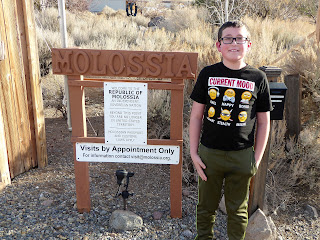The Boy Who Harnessed the Wind
My son recently read "The Boy Who Harnessed the Wind" in his classroom. He enjoyed it so much, that he wanted me to read the book as well. I checked it out, and see why he was inspired by author William Kamkwamba.


Kamkwamba describes the small Malawian town where he was born and raised. His family is a typical farming family in the village, relying on the forces of nature to grow crops. However, when those forces of nature work against the farmers preventing a mature crop, the farmers and citizens trust the government to have a food surplus.
William and his family live in a home without electricity. Any time they need light, they burn a kerosene lamp inside the home, which leaves unhealthy black residue on the walls, and in their lungs.
William is accepted to a secondary school. However, famine strikes the country. The government sold all of the surplus, leaving the citizens desperate, poor, and malnourished. William is unable to continue school after a couple weeks because his family cannot pay tuition. He and his family struggle through the famine with a failed crop and nary a thing to eat.
But William finds an outlet in a local library, where he reads science and engineering books. His mind churns through the books and he concocts a plan to assemble a windmill to harness the power of the winds in his town. He knows that his windmill can provide electricity to his home and power a well to provide a source of water during the times of famine.
William's windmill takes time to construct because he must find recycled materials in the trash, dump, or other sources. And the people in his hometown, who trust in medicine men and magic, mock William and his plans.
Until his windmill works, providing electricity to the Kamkwamba home. As word spreads, William becomes a media sensation, as bloggers and radio reporters cover the story of the teenager who harnessed the wind.

The Story
The book tells the real life story of Malawian-born Kamkwamba and his plan to save his family during a famine that ravaged his country and his family.Kamkwamba describes the small Malawian town where he was born and raised. His family is a typical farming family in the village, relying on the forces of nature to grow crops. However, when those forces of nature work against the farmers preventing a mature crop, the farmers and citizens trust the government to have a food surplus.
William and his family live in a home without electricity. Any time they need light, they burn a kerosene lamp inside the home, which leaves unhealthy black residue on the walls, and in their lungs.
William is accepted to a secondary school. However, famine strikes the country. The government sold all of the surplus, leaving the citizens desperate, poor, and malnourished. William is unable to continue school after a couple weeks because his family cannot pay tuition. He and his family struggle through the famine with a failed crop and nary a thing to eat.
But William finds an outlet in a local library, where he reads science and engineering books. His mind churns through the books and he concocts a plan to assemble a windmill to harness the power of the winds in his town. He knows that his windmill can provide electricity to his home and power a well to provide a source of water during the times of famine.
William's windmill takes time to construct because he must find recycled materials in the trash, dump, or other sources. And the people in his hometown, who trust in medicine men and magic, mock William and his plans.
Until his windmill works, providing electricity to the Kamkwamba home. As word spreads, William becomes a media sensation, as bloggers and radio reporters cover the story of the teenager who harnessed the wind.
The Lessons We Learned
I love the lessons of hope and perseverance presented in the book. William's family describes him as Noah, the biblical character who saves his family from the Flood by building an ark. Like Noah, William is mocked for his ideas, but in the end he saves his family.
Hope shines throughout the story. Even during the chapters describing the awful and dismal period of famine, William offers hope. What a great lesson for us. William loses a lot during the famine, and witnesses more than one person should have to see. However, he is still hopeful when everything seems hopeless.
His ability to persevere despite the odds is a terrific example for every reader. He does not give up when he cannot find the necessary parts for his windmill. He tirelessly searches the dump and junk yard for items he could re-purpose. He could give up when mocked, but the ridicule seems to spur him on. Even after his invention is widely recognized, William charges forward with new ideas. You cannot help but cheer when the small town boy goes to the big city and presents before a large crowd at a TED convention.
Williams story was an inspiration for our family. His tireless studies and persistent search for goods to build a windmill encouraged us. When times are tough, it is easy to give up in frustration. Hopefully, though, the next time times are tough, we will think about the indomitable spirit of William Kamkwamba, the boy who harnessed the wind.
Williams story was an inspiration for our family. His tireless studies and persistent search for goods to build a windmill encouraged us. When times are tough, it is easy to give up in frustration. Hopefully, though, the next time times are tough, we will think about the indomitable spirit of William Kamkwamba, the boy who harnessed the wind.




Comments
Post a Comment